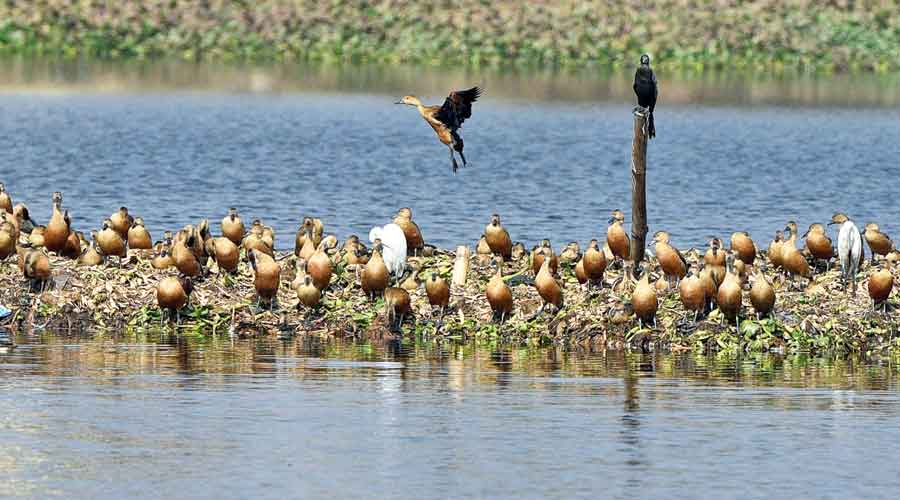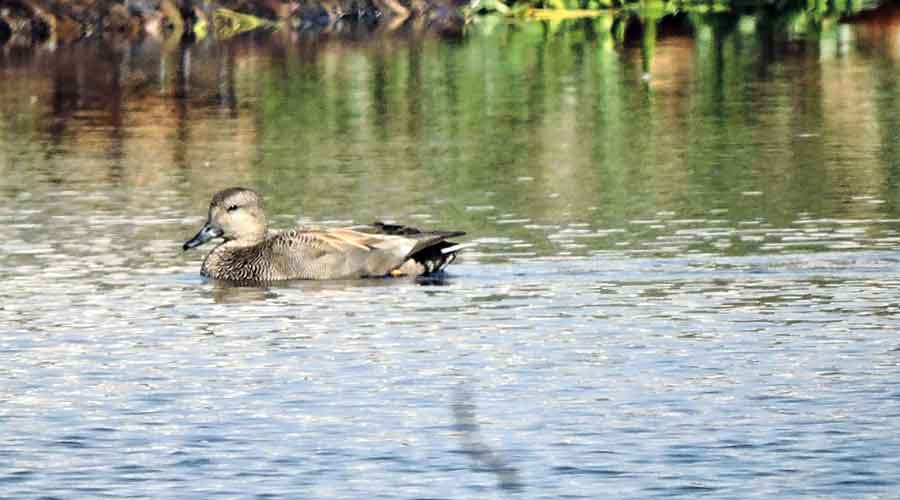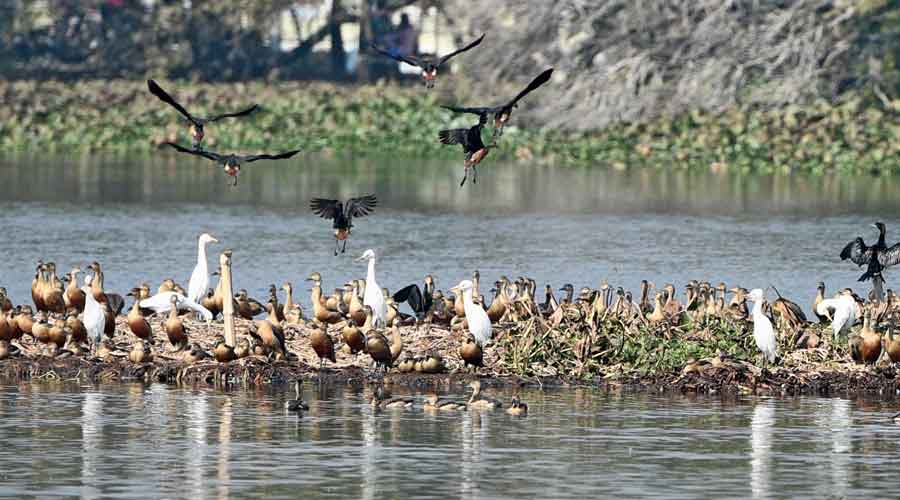Santragachhi Jheel is currently home to nearly 5,000 birds, including a “near threatened” trans-Himalayan migrant, birdwatchers who have visited the water body in Howrah said.
“About 10 Gadwalls and one Ferruginous Pochard are at the jheel nowadays. Both of them are trans-Himalayan migrants,” said birdwatcher Prosenjit Dawn. The birds breed in central Asia, China and Mongolia and travel thousands of miles to reach the subcontinent to escape the harsh winter there.
The Ferruginous Pochard, also called Ferruginous Duck, is listed as “near threatened” by the International Union for the Conservation of Nature (IUCN). The website of IUCN said: “The species is currently listed as Near Threatened as it is suspected to be undergoing a moderately rapid overall decline.”
Veteran birdwatcher Shubhankar Patra said any sighting of Ferruginous Pochard is greeted with lots of cheers among birdwatchers because “their numbers are declining”.

Birds at Santragachhi Jheel on Monday Pradip Sanyal
A Black Winged Stilt, another trans-Himalayan migrant that had never been known to have been sighted at Santragachhi, was seen at the water body in the first week of December, said Dawn. “Because of a timely clearing of water hyacinths, birds started to arrive early this year, at least a fortnight earlier than previous years,” he said.
Dawn and Patra both said close to 5,000 birds were at the jheel now. Birdwatchers are hoping to see a few more trans-Himalayan migrants in January.
The overwhelming majority of birds are Lesser Whistling Ducks, which are found around water bodies in Bengal through the year but in far smaller numbers. “It is a delight to be around Santragachhi Jheel nowadays,” said Dawn.
To any visitor training their eyes at the water hyacinth islands at the jheel, the brown chestnut bodied ducks would be hard to miss. Their calls, sounding like whistles, will ring in the ears.
Among the other local birds sighted at the jheel are Purple Heron and Common Moorhen.
Patra said the uniqueness of Santragachhi Jheel was that despite being surrounded by houses, railway tracks and small manufacturing units, so many birds wintered there every year.

The Ferruginous Pochard spotted at Santragachhi Jheel Surajit Dawn
“This place is so close to Calcutta. Santragachhi is a densely populated and busy area. Around the jheel, there are houses. Hundreds of trains pass through Santragachhi station. There is so much noise pollution. Yet the birds choose to come here every year,” he said.
“We do not know why they prefer Santragachhi Jheel. But we must ensure that the water body is conserved properly.”
Lesser Whistling Ducks and other birds at the jheel use the water hyacinth islands as their roosting place during the day.
A bird count at the jheel is scheduled for January 16. But Patra said it would show the count of that day. There were occasions in previous years when the count of birds was found to be lower on the day of the count.











